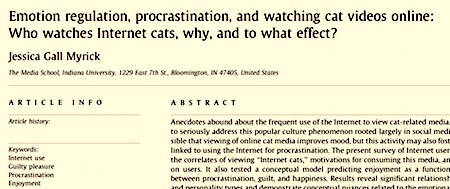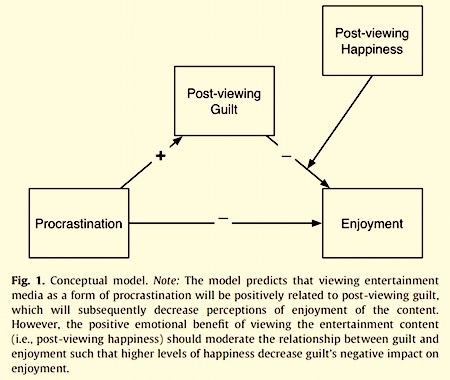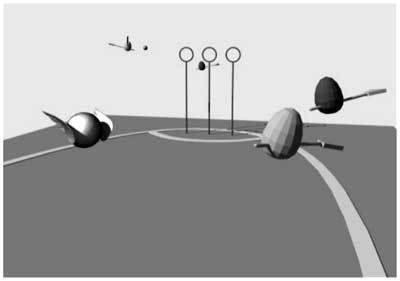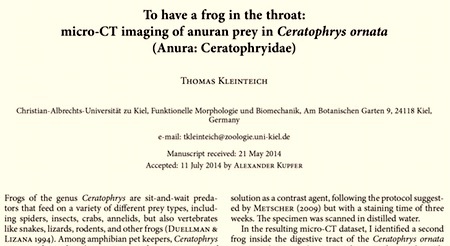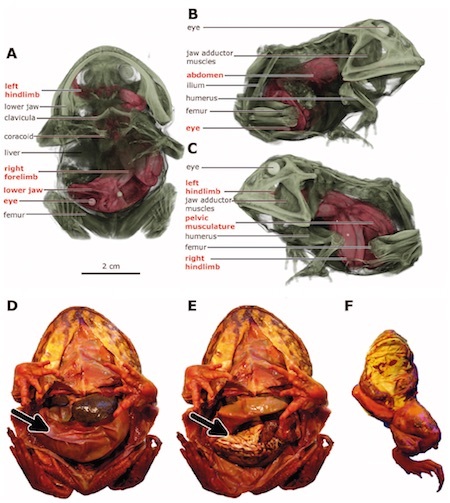Marc Abrahams's Blog, page 323
June 19, 2015
Can you spot wealthy New Yorkers by their ‘R” sounds?
Is it possible to gauge how wealthy a New Yorker might be just by the way they pronounce their /r/ s? A new paper in the Journal of English Linguistics investigates whether variations of rhoticity [viz. the prevalence, or lack of, the /r/ sound in speech] in wedding-consultants’ speech could be correlated with the amount of money a bride states she is willing to spend on her wedding dress. That is to say, the amount of money she has at her disposal, used as a measure of her (perceived) social status. The paper, in the Journal of English Linguistics, June 2015, 43: 118-142, can be downloaded here for US$30. “(r) You Saying Yes to the Dress?”: Rhoticity on a Bridal Reality Television Show
[Background: The paper was inspired by the work of professor William Labov at the University of Pennsylvania, who, in 1966, published ‘The Social Stratification of (r) in New York City Department Stores’ finding that employees at Saks (which was considered upmarket) tended to have the highest rate of constricted /r/ s than those at Macy’s or S.Klein (considered not-so-upmarket)]
Further insight into the new study is provided (free of charge) by the University of Pennsylvania, which hosts another (earlier) paper by the same two authors … ‘A Department Store Study for the 21st Century: /r/ vocalization on TLC’s Say Yes to the Dress’. It describes how data were gathered from recordings of the 2007 TV docusoap ‘Say Yes to the Dress’ which was set in the New York bridal salon Kleinfeld. Analysis of the speech of the bridal consultants involved in sales transactions (focussing on words such as Fur, Start, Letter, Square etc) showed that :
“ […] when consultants are working with a bride in the High budget category (over $8000) constricted [r] is the favored variant. Slightly less favoring [r-1] is the Medium category ($3000 -$5000), followed by the Low category (under $3000).”
The consultants were presumably attempting (consciously or not) to reflect the speech patterns of their customers. Thus the new study supports Labov’s findings that wealthy New Yorkers tend to constrict their /r/ s.
Bonus: Here are some more videos featuring speech of New Yorkers for your own comparative analyses.
Postscript : According to Wikipedia, an extreme example of /r/ suppression can be found in some New York accents – R-labialization , or as Improbable prefers to call it ‘Woticity’.

June 18, 2015
How much wood would… if a CPU chip were made of wood?
How much wood would a CPU chip manufacturer ship if a CPU chip were made of wood?
The answer to that seldom-asked question appears to be contained, more or less, in a June 17, 2015 report called “Researchers Develop Biodegradable Wooden Computer Chips,” in Tech Briefs. This photo accompanies the report, which says:
In an effort to alleviate the environmental burden of electronic devices, a team of University of Wisconsin-Madison researchers has collaborated with researchers in the Madison-based U.S. Department of Agriculture Forest Products Laboratory (FPL) to develop a surprising solution: a semiconductor chip made almost entirely of wood.
Thanks to investigator Don Bockinfeld for bringing this to our attention.)

“The Osler Industry: Insightful History or Insipid Hagiography?”
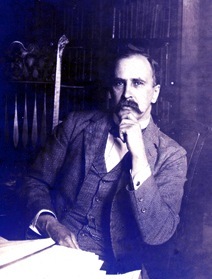 Osler, Osler, Osler. What about Osler, all these years after he departed the scene?
Osler, Osler, Osler. What about Osler, all these years after he departed the scene?
“The Osler Industry: Insightful History or Insipid Hagiography?” C.S. Bryan and R.L. Golden, Journal of Medical Biography, 2007;15 Suppl 1:2-5. The authors explain:
“The life and legacy of Sir William Osler (1849-1919) have been celebrated by nearly 1900 articles, 10 special issues of medical journals, several biographies, numerous lectures and orations, and regular meetings of ‘Osler Societies’ throughout the world. To what extent does this ‘industry’ reflect serious history as opposed to hagiography?”

June 17, 2015
Recent progress in Quidditch studies (part 3)
Our post-penultimate note regarding Quidditch in academia concerns work in progress from doctoral student Ryan Rigda at the Department of Communication, Texas A&M University, US, who draws attention to Quidditch as a source of feminist agency.
“
Using a close text analysis of Quidditch blogs since the 2012 World Cup, I argue that the IQA has truly created an inclusive sport. Drawing upon a combination of critical theory, feminist theory, and theories of agency, I argue that the female voice found in Quidditch blogs serve as a site for feminist agency.”
see: ‘Creating Equality Through Quidditch: A Rhetorical Analysis of Female Quidditch Blogs‘
Note: This concludes our short summary of Quidditch-based research, we shall of course endeavour to keep readers informed of any future developments in the field.

Podcast #16: You bastard.
Business bastards, garlicky men and women, flatulent dogs, and crowded beds, and other things, turn up in this week’s Improbable Research podcast.
Click on the “Venetian blinds” icon — at the lower right corner here — to select whichever week’s episode you want to hear:
SUBSCRIBE on Play.it or iTunes, to get a new episode every week, free.
[NEWS: Soon, the podcast will also be available on Spotify.]
This week, Marc Abrahams tells about:
You bastard. (“You Bastard: A Narrative Exploration of the Experience of Indignation within Organizations,” David Sims, Organization Studies, vol. 26, no. 11, 2005, pp. 1625-40. Featuring dramatic readings by Robin Abrahams (@RobinAbrahams), who writes the Miss Conduct advice column in the Boston Globe.
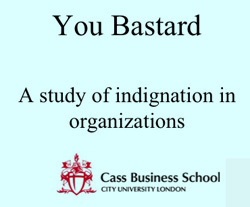
Garlic in men and women (Hirsch, Alan R. (2000). ‘Effects of Garlic Bread on Family Interactions.’ Psychosomatic Medicine 62 (1): 103. / Kuettner, E. Bartholomeus, Rolf Hilgenfeld, and Manfred S. Weiss (2002). ‘The Active Principle of Garlic at Atomic Resolution.’ Journal of Biological Chemistry 277 (48): 46402–7. / Thomas, H. F., P. M. Sweetnam, and B. Janchawee (1998). ‘What Sort of Men Take Garlic Preparations?’ Complementary Therapies in Medicine 6: 195–97. Featuring dramatic readings by Andrew Berry, who researches how living things, over time, evolve into new kinds of living things.)
Flatulence in dogs. (“Flatulence in Pet Dogs,” by B.R. Jones, K.S. Jones, K. Turner, and B. Rogatski, New Zealand Veterinary Journal, 1998 Oct;46(5):191-3. / “Administration of Charcoal, Yucca Schidigera, and Zinc Acetate to Reduce Malodorous Flatulence in dogs,” Catriona J. Giffard, Stella B. Collins, Neil C. Stoodley, Richard F. Butterwick, and Roger M. Batt, The Journal of the American Veterinary Medical Association, vol. 218, no. 6, March 15, 2001, pp. 892-6. . Featuring dramatic readings by Nicole Sharp (@fyfluiddynamics), who created and produces FYFD.)
Why your doctor should smell. (“Scratch and Sniff. The Dynamic Duo,” W.Z. Stitt and A. Goldsmith, Archives of Dermatology, vol. 131, no. 9, September 1995, pp. 997-9. Featuring dramatic readings by Jean Berko Gleason (@JeanBerkoG), who created The Wug Test.)
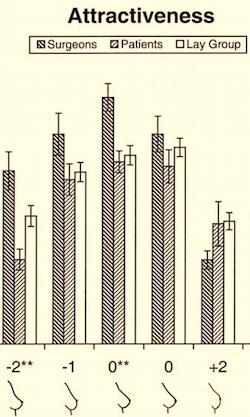
Boys will be boys. (“The Adaptive Function of Masturbation in a Promiscuous African Ground Squirrel,” Jane M. Waterman, PLoS ONE, vol. 5, no. 9, 2010. / “Differences in Breast Shape Preferences Between Plastic Surgeons and Patients Seeking Breast Augmentation,” H.C. Hsia and G.J. Thomson, Plastic & Reconstructive Surgery, vol. 112, no. 1, July 2003, pp. 312–20. / “Changes in Pornography-Seeking Behaviors Following Political Elections: An Examination of the Challenge Hypothesis,” Patrick M. Markey and Charlotte N. Markey, Evolution and Human Behavior, vol. 31, no. 6, November 2010, pp. 442–6. Featuring dramatic readings by Chris Cotsapis (@ccots), who researches the biochemical ways the immune system works or doesn’t.)
You never sleep alone. (Van Bronswijk, J. E. M. H. (1994). ‘A Bed Ecosystem.’ Lecture Abstracts – 1st Benelux Congress of Zoology, Leuven, 4–5 November. / Solarz, Krzysztof (1997). ‘Seasonal Dynamics of House Dust Mite Populations in Bed/Mattress Dust from Two Dwellings in Sosnowiec (Upper Silesia, Poland): An Attempt to Assess Exposure.’ Annals of Agricultural and Environmental Medicine 4: 253–61. / Sesay, H. R., and R. M. Dobson (1972). ‘Studies on the Mite Fauna of House Dust in Scotland with Special Reference to that of Beddings.’ Acarologia 14: pp. 384–92. / “Morphological adaptation for precopulatory guarding in astigmatic mites (Acari: Acaridida),” Wojciech Witaliński, Jacek Dabert and Manfred G. Walzl, International Journal of Acarology, vol. 18, no. 1, 1992, pp. 49-54. Featuring dramatic readings by Maggie Lettvin, who created and is “The Beautiful Machine“.)
The mysterious John Schedler perhaps did the sound engineering this week.
The Improbable Research podcast is all about research that makes people LAUGH, then THINK — real research, about anything and everything, from everywhere —research that may be good or bad, important or trivial, valuable or worthless. CBS distributes it, both on the new CBS Play.it web site, and on iTunes (and soon, also on Spotify).

June 16, 2015
The Effect of Cat Videos on Human Beings
Now, at last, there is a published scholarly study of the study of cat videos. The study is:
“Emotion regulation, procrastination, and watching cat videos online: Who watches Internet cats, why, and to what effect?” Jessica Gall Myrick, Computers in Human Behavior, vol. 52, November 2015, pp. 168–176. The author, a professor at Indiana University, explains:
“research has yet to seriously address this popular culture phenomenon rooted largely in social media platforms. It is possible that viewing of online cat media improves mood, but this activity may also foster negative outcomes linked to using the Internet for procrastination. The present survey of Internet users (N = 6795) explored the correlates of viewing ‘Internet cats,’ motivations for consuming this media, and its potential effects on users….
“Bivariate correlations revealed the interrelationships between personality, cat-related behaviors, cat affinity, and viewing of cat-related Internet content. These analyses demonstrated that higher frequency of viewing Internet cats was positively and significantly associated with cat affinity, cat ownership (current and past), pet assistance behaviors, agreeableness, shyness, and affective support. Frequency of viewing was negatively and significantly associated with emotional stability, with negative values of emotional stability similar to higher trait anxiety/neuroticism.”
Here’s further detail from the study:
Here is a cat video, one of many that, reportedly, can be found on the Internet:
.
BONUS: Here is a dog video, produced by Jessica Gall Myrick, author of the study “Emotion regulation, procrastination, and watching cat videos online: Who watches Internet cats, why, and to what effect?”:

“Just think how many periodic tables you could put on my entire head”
Martyn Poliakoff (of the University of Nottingham) and his hair star in this epic video could be named “The Periodic Table is Etched onto One of Martyn Poliakoff’s Hairs”:

June 15, 2015
Recent progress in Quidditch studies (part 2)
Following on from our recent note concerning Quidditch in academia, may we also recommend a paper by Raphael Crawford-Marks, Lee Spector, and Jon Klein of the Cognitive Science department at Hampshire College, Amherst, US? It’s entitled: ‘Virtual Witches and Warlocks: A Quidditch Simulator and Quidditch-Playing Teams Coevolved via Genetic Programming’ (in: Late Breaking Papers of the Genetic and Evolutionary Computation Conference (GECCO-2004). Published by the International Society for Genetic and Evolutionary Computation, 2004.)
“Creating a Quidditch Simulator presented some unique challenges. Being an imaginary game, the rules weren’t completely described, and some of the imagined rules didn’t really make sense once the game was implemented. However, with a few modifications to Rowling’s vision, simulated quidditch is as fast-paced and exciting as she described.”
Note: The image is from a previous paper on Virtual Quidditch co-authored by professor Lee Spector.
Coming soon: Quidditch as a source of feminist agency.

June 14, 2015
Do postal employees have a sense of humor?
Postal workers have no sense of humor, according to an odd stereotype that mutters around the Internet. But, with a few exceptions, it’s not true. The National Association of Letter Carriers has a newsletter called Postal Record. Postal Record‘s April 2011 issue has an article called “Unsigned, unsealed… DELIVERED — Experimenter tests USPS’s sense of humor. The article begins:
“Ask letter carriers about the strangest thing they’ve had to deliver on their routes and you’ll get some appropriately strange answers: adult-sized hula hoops, a broom (unwrapped), a desk chair (unboxed), a cowboy boot (unwrapped), a large homemade cookie with the address written in icing, and every conceivable kind of bug or small animal. Some carriers even deliver human remains and body parts. It seems like anything that can be shipped probably has been.*
Jeff Van Bueren decided to put that idea to the test. Writing in The Annals of Improbable Research, a humorous science-based magazine, Van Bueren tested the Postal Service by mailing an assortment of strange and unwieldy objects—usually unpackaged—to see if they’d get through. He was surprised at his high success rate:
✓ An in-bloom rose with a tag attached to the stem arrived at the address three days later with the beaten-up bud still attached.
✓ A fresh green coconut with the address written on the husk arrived 10days after being mailed from Hawaii…
You can read the entire Postal Record article online.

June 13, 2015
A frog in the throat of a frog
A frog in the throat of a frog dominates the discussion in this study:
“To have a frog in the throat: micro-CT imaging of anuran prey in Ceratophrys ornata (Anura: Ceratophryidae),” Thomas Kleinteich [pictured here], Salamandra, vol. 51, no. 2, June 30, 2015, pp. 209-211. The author, at Christian-Albrechts-Universität zu Kiel, Germany, reports:
 “Frogs of the genus Ceratophrys are sit-and-wait predators that feed on a variety of different prey types, including spiders, insects, crabs, annelids, but also vertebrates like snakes, lizards, rodents, and other frogs. Among amphibian pet keepers, Ceratophrys spp. are often referred to as pac-man frogs on account of their ability to consume vast amounts of prey as well as relatively large prey items…. To overcome large prey, Ceratophrys spp. have wide mouths and heavily ossified skulls. However, besides of them being able to overcome and capture large prey items, it is critical for these frogs to fit large and bulky prey objects into their body cavity. Here I provide a first description on how large anuran prey is placed inside the body of a frog of the genus Ceratophrys by using micro-CT imaging.
“Frogs of the genus Ceratophrys are sit-and-wait predators that feed on a variety of different prey types, including spiders, insects, crabs, annelids, but also vertebrates like snakes, lizards, rodents, and other frogs. Among amphibian pet keepers, Ceratophrys spp. are often referred to as pac-man frogs on account of their ability to consume vast amounts of prey as well as relatively large prey items…. To overcome large prey, Ceratophrys spp. have wide mouths and heavily ossified skulls. However, besides of them being able to overcome and capture large prey items, it is critical for these frogs to fit large and bulky prey objects into their body cavity. Here I provide a first description on how large anuran prey is placed inside the body of a frog of the genus Ceratophrys by using micro-CT imaging.
“The specimen described herein is a 70 mm (snout–vent length) female Ceratophrys ornata housed in the herpetological collections of the Zoologisches Museum Hamburg, Germany.”
Here’s detail from the study:
BBC Earth has a nice report about the report, with the headline “The Pac-Man frog with a frog in its throat“.
BONUS (unrelated): “A frog in your throat or in your ear? Searching for the causes of poor singing,” Sean Michael Hutchins, and Isabelle Peretz, Journal of Experimental Psychology: General 141, no. 1 (2012): 76.
BONUS (mostly unrelated): Dead Duck Day at the Natural History Museum in Rotterdam.
BONUS (entirely unrelated): “Double-throat fixing type acute frog” Chinese patent #203741653, issued July 30, 2014.

Marc Abrahams's Blog
- Marc Abrahams's profile
- 14 followers



